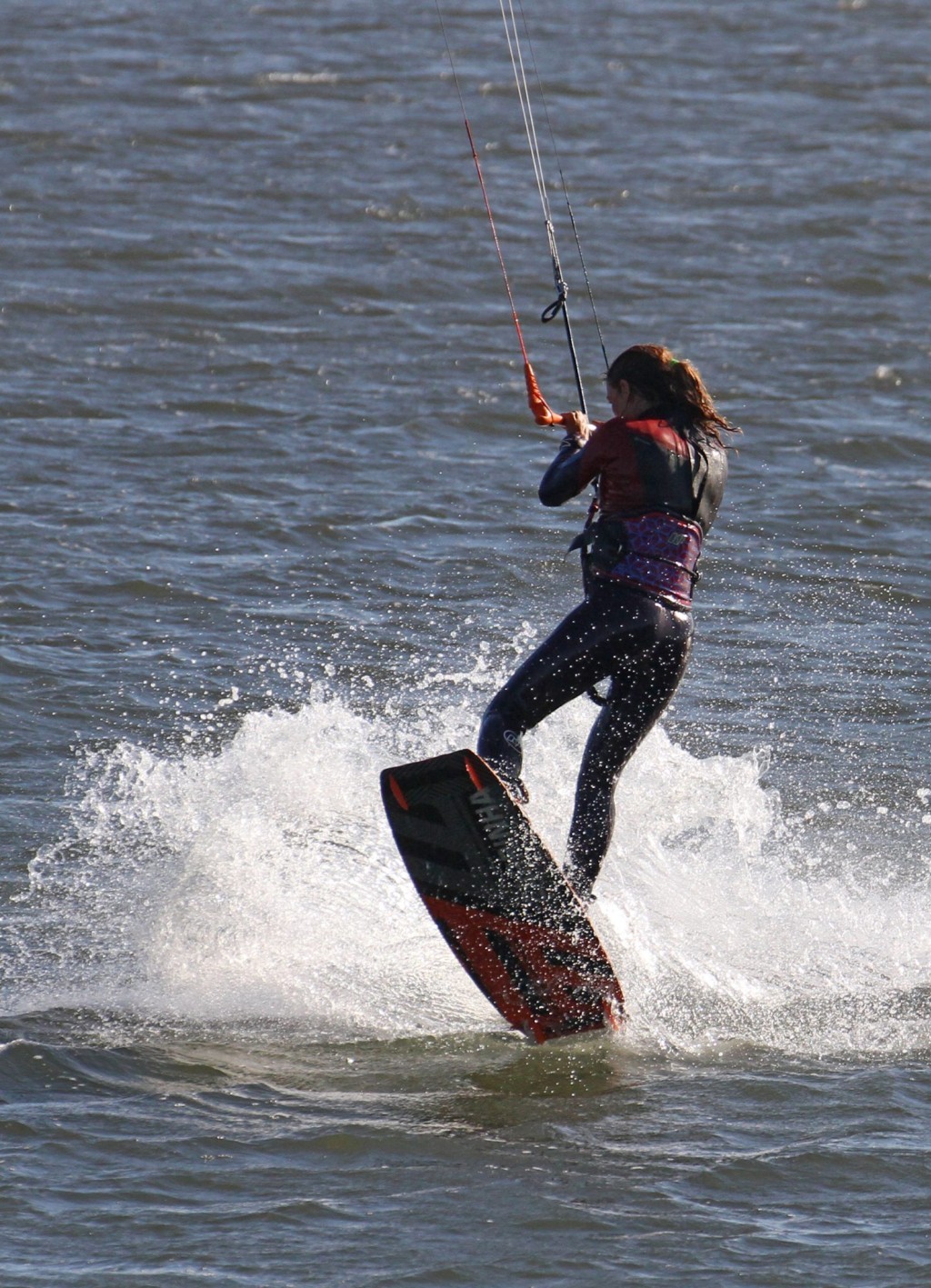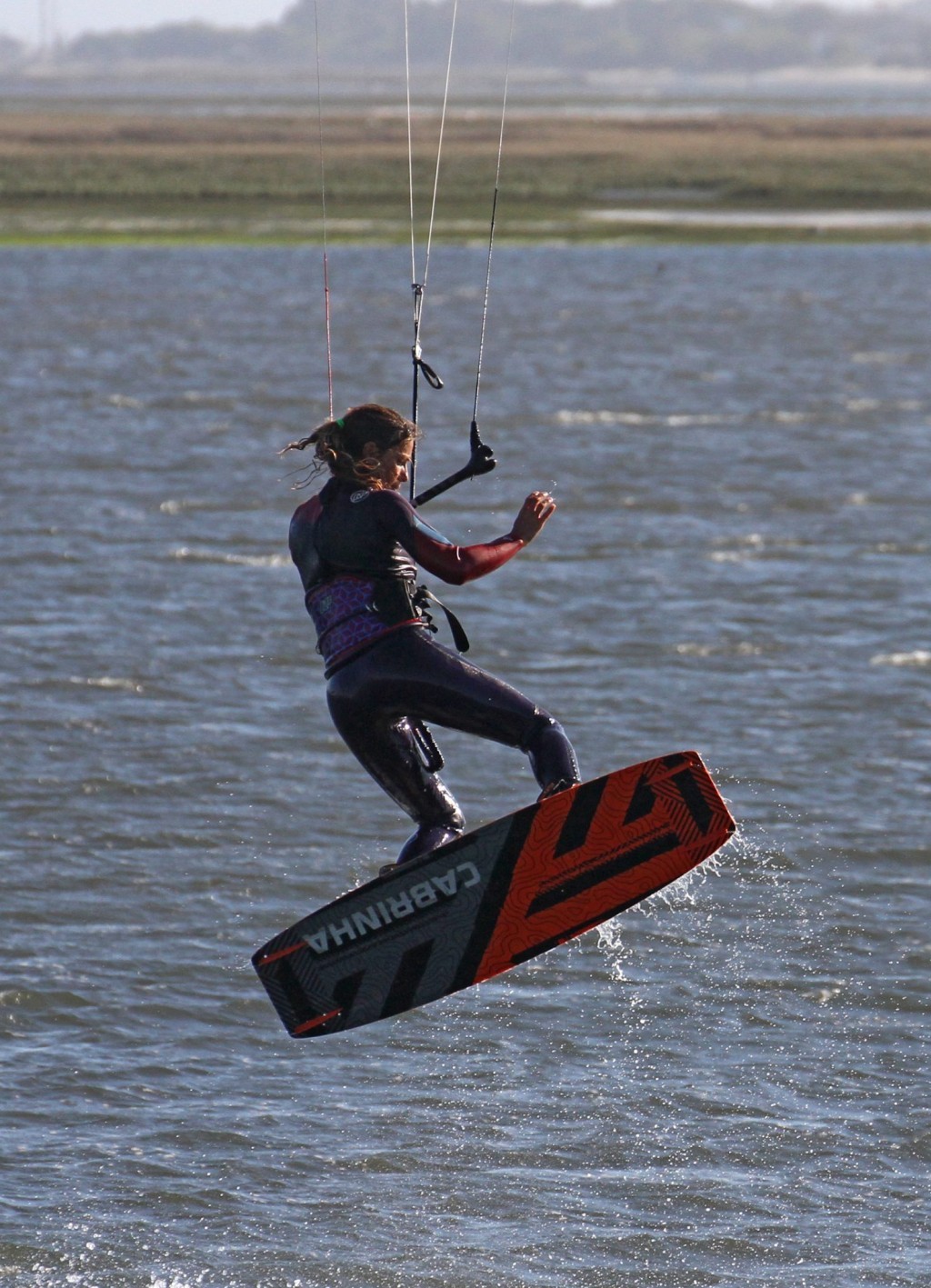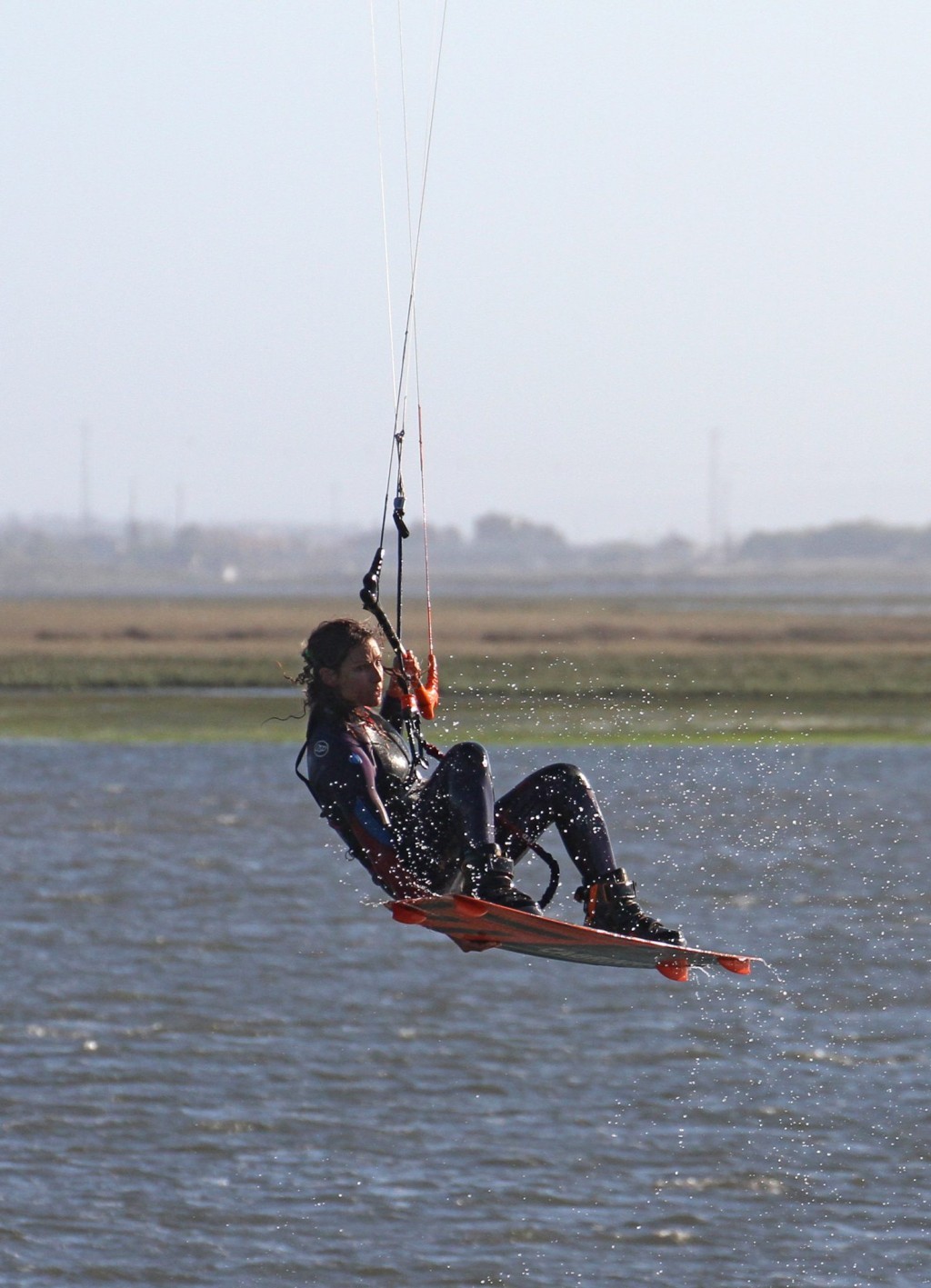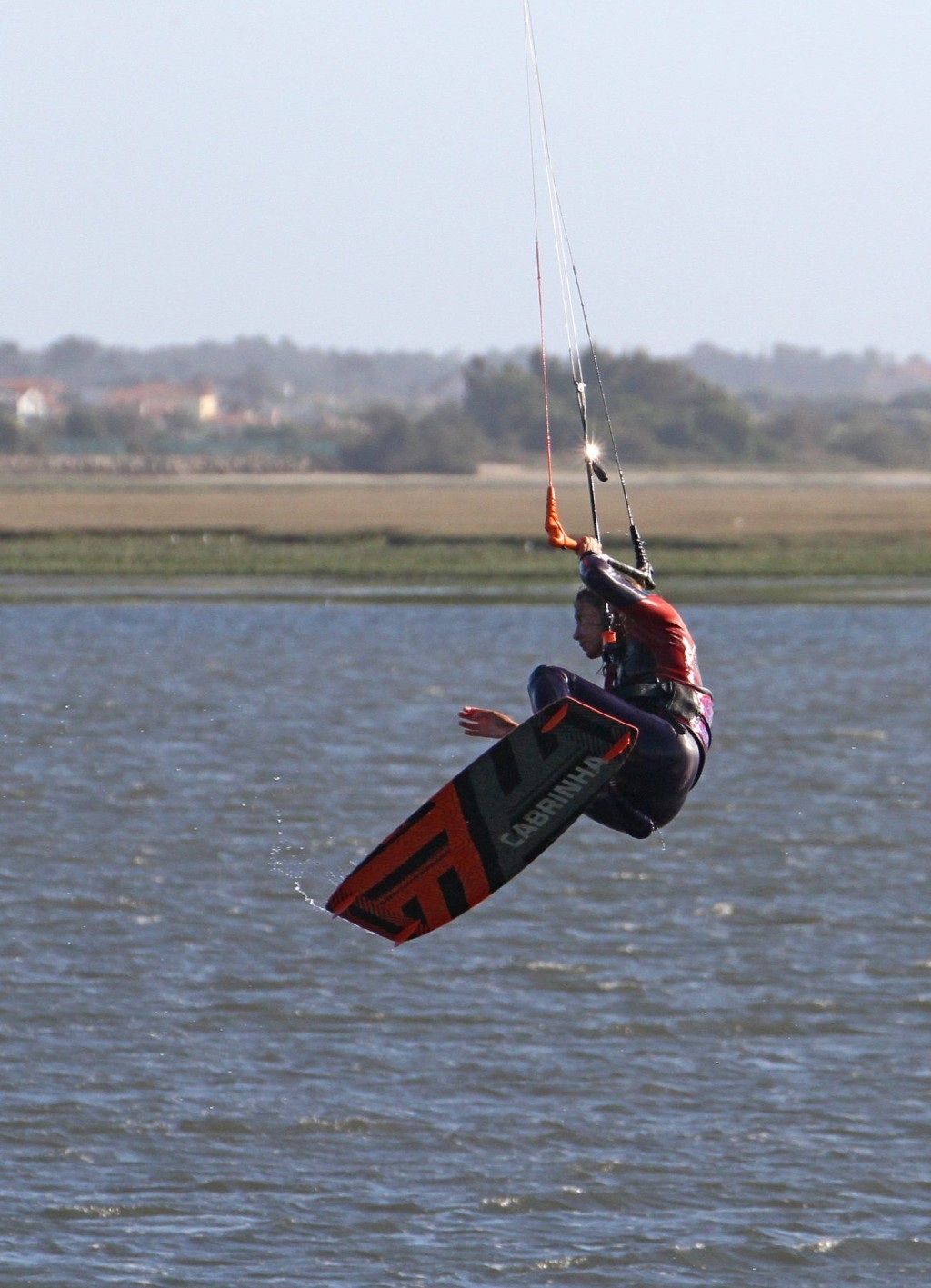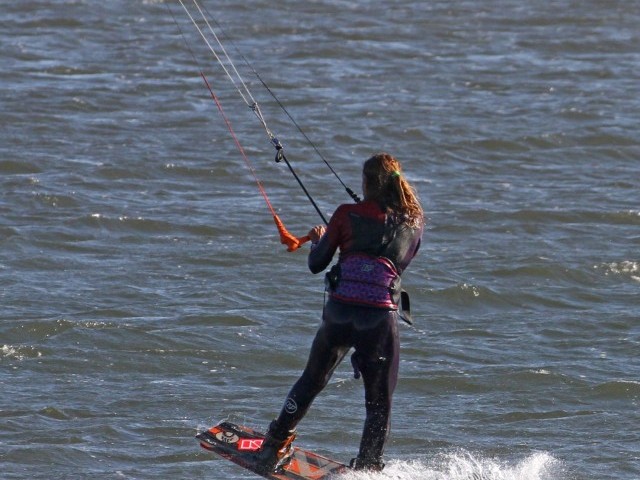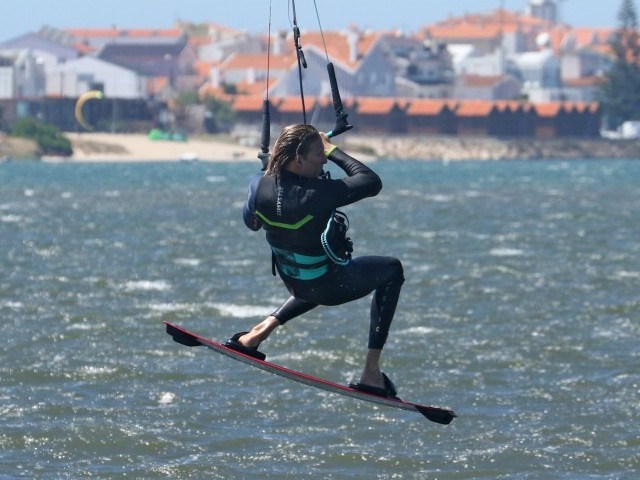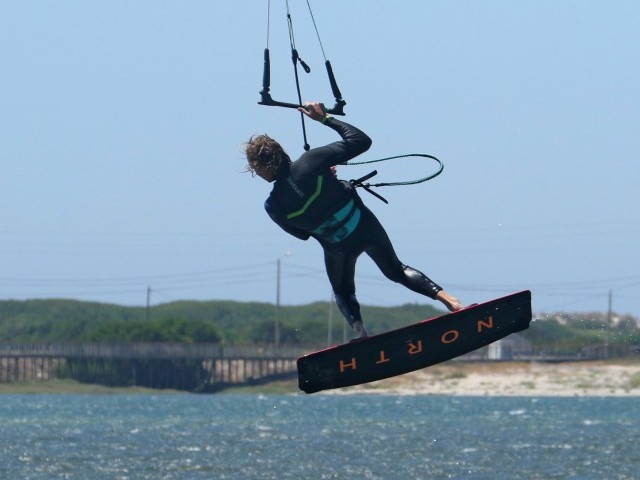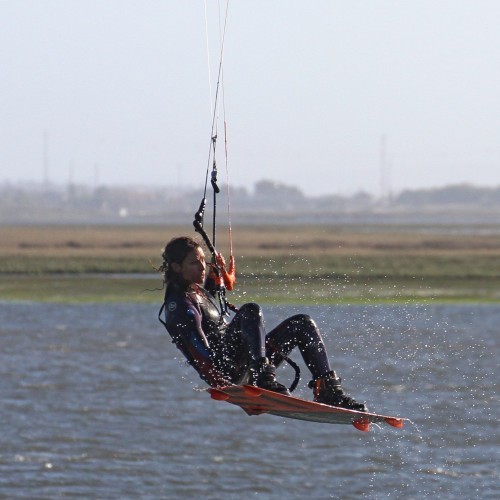
Front Loop Stale Fish Sent Jump
Technique / Intermediate
Here’s a sassy way to brighten up your sent front loop that you won’t see too often. The Stale Fish grab really resides with wake style, but it certainly makes a fun addition regardless, just so long as you intend on getting some air and styling it out. Last issue we walked you through this with a back roll, so now it’s time to go the other way, which may seem a little less natural.
Before we start, however, let us remind you that a stalefish grab is on the heel side edge, preferably between your heels with your back hand, but behind your back foot will do. So, in your front loop, you’ll be reaching down as if grabbing for a tail grab, but a bit further forwards and you’ll be boning your back leg out! Could take some battling against your deep-rooted muscle memory. Giving yourself time to do this is all about a slow rotation. Let’s have a look.
Inception Pic A.
You will need enough time and height so that you can perform a slow front rotation. Therefore, the usual solid edge, enough speed and a decent kite send are paramount to you having half a chance. Approach as you would for a decent sent front loop with your kite no higher than 11 or 1. That said, this is where the similarity to your front roll ends.
Your actual take off is significantly different, somewhat to slow it down, but for the most part to reach the grab in good time and allow you to be in a position from which you can bone your back leg out. You will still give the board an almighty kick, but you won’t be throwing yourself forwards.
If you look at Karine her back leg is extended, she’s stamped hard, she’s also pulled the bar in and levelled it, but she hasn’t thrown her head or shoulders forwards or down. |In fact, her shoulders are still parallel to the water. This means that she can keep her upper body back over the tail of the board. The hefty stamp will send her forwards into a very slow rotation by deliberately knocking her off balance.
Lift & Look Pic B.
From this upright and back body position, you’ll be able to reach the grab more easily, and even more importantly, earlier. As a result of not throwing yourself forwards, you will not be extended by the kite, which means that without the pinging force you can lift your back leg towards you as soon as you’ve kicked off.
To make sure that you aim in the right direction you need to look for the grab, and to help with this you will lift your hells as you bend your legs. This will reveal the spot. As Karine demonstrates, she is looking down at the board, while presenting herself with the heelside edge, rather than a flat table. This will make the grab noticeably easier.
The Grab Pic C.
As well as showing the moment of the grab, this pic also shows the flight position. Karine has planted her hand and is gripping the board, she’s turned her head and is now leading her rotation with it, her bar is in on the sweet spot, and she is steering the kite forwards. Note how she is “behind” the bar, tucked in underneath it. This is the result of her take off, and gives her enough room to reach the grab and continue onto the next step of the Stalefish.
Tweak the Bone Pic D.
Tweaking it, boning it, whatever you call it, is really what will set this move apart and amplify the fact that you’re doing something different. To be fair visualising this move is essential as although Karine makes it look like a walk in the park, it’s not the most intuitive move. You are trying to extend the same leg as you are effectively holding.
Here Karine is stretching her back leg out, which means she must extend her back arm with it. You’re probably used to the simpler push-pull tweak, pull the arm in while extending the opposite leg against it, and hey presto - sick looking move. Here the arm and leg are both pushing away, so you’ll need to pull your front leg in close to help push them out. Karine has her front knee lifted into her chest. It should also go without saying that she is still flying the kite, the bar is in and a little bit of front hand pressure to keep redirecting the kite forwards.
Recover Your Balance Pic E.
As with most grabs, this will look best if you can hold it for longer than a split second. However, there will be a few factors working against you, and this photo clearly exposes them. The elephant in the room is your slow rotation. This means that you won’t be coming around on automatic pilot. Other factors combine to put you off balance.
The grab results in you coming out of your rotation with the tail pointing down at the water, front knee high and upwind. Not really where it wants to be. To compound this further your body back position puts you behind the bar, which means that it is not easy to get your weight up and forwards so that you can finish facing the right way with the board underneath you.
Fortunately, the one thing that will pull you back up and overcome all these Gremlins is some power from the kite. As such once you can spot your landing you’ll need to give the bar a hefty pull to get the kite diving.
Reception Pic F.
If you get the kite diving hard enough it will result in a comfortable landing position, well balanced over the board, downwind with a touch of tail first to soften the blow as Karine has managed here. One word of warning though, because of the dive you will doubtless be coming in quite fast, so commitment is key. If you don’t dive, you may not make it, but if you do dive you’re going to prefer getting your feet under you! As with all fast landings, take it. You’ll need to absorb the impact, but don’t just crumple up, flex but resist somewhat. Brilliant.
Top Tips
As touched upon already a bit of visualisation and dry land run through, sitting with the board on your feet will help no end with getting you head around this grab. Sit on the beach and rotate yourself and ponder how to tweak, concentrating both on extending the back leg and arm while pulling in the front leg. Better a few times in the dry dock than suffering a brain fart at 4 metres plus.
Have a look through the sequence and the videos to ponder how you’ll decipher this one.
Common Problems
Let’s start with not reaching the grab. Two things, first off lift the heels, a cardinal sin in other grabs, but essential here. And don’t throw yourself forward into your rotation, as you’ll be throwing yourself away from the grab.
If you’re dropping like a stone, it’s because you’re so fixated on taking off body back that you’re not redirecting the kite. Make sure that you pull the bar in as you kick as this will at least stop the kite moving too far back, and should be enough to start the redirection.
And finally, if you’re not making it fully around before splashing down. In your early attempts don’t feel obliged to hold the grab, a quick tickle, even without the full tweak will suffice. Because your weight is back and your back leg and arm are extending, it is easy to try and balance yourself off the front hand. The result is that you pull on the bar, get the kite too far forward and diving way too early. Relax the front hand and don’t grab too long until you find the balance with a few under your belt.
Keystones
- Good send off a solid edge
- Kick hard, keep shoulders and head back towards tail
- Lift back leg and heels to spot grab
- Grab behind back foot and tweak out
- Aggressive dive to pull out of move
This technique article was in Issue 65 of IKSURFMAG.
Related
By Christian and Karine
Christian and Karine have been working together as a coaching team, running improver to advanced kitesurfing clinics since 2003.







